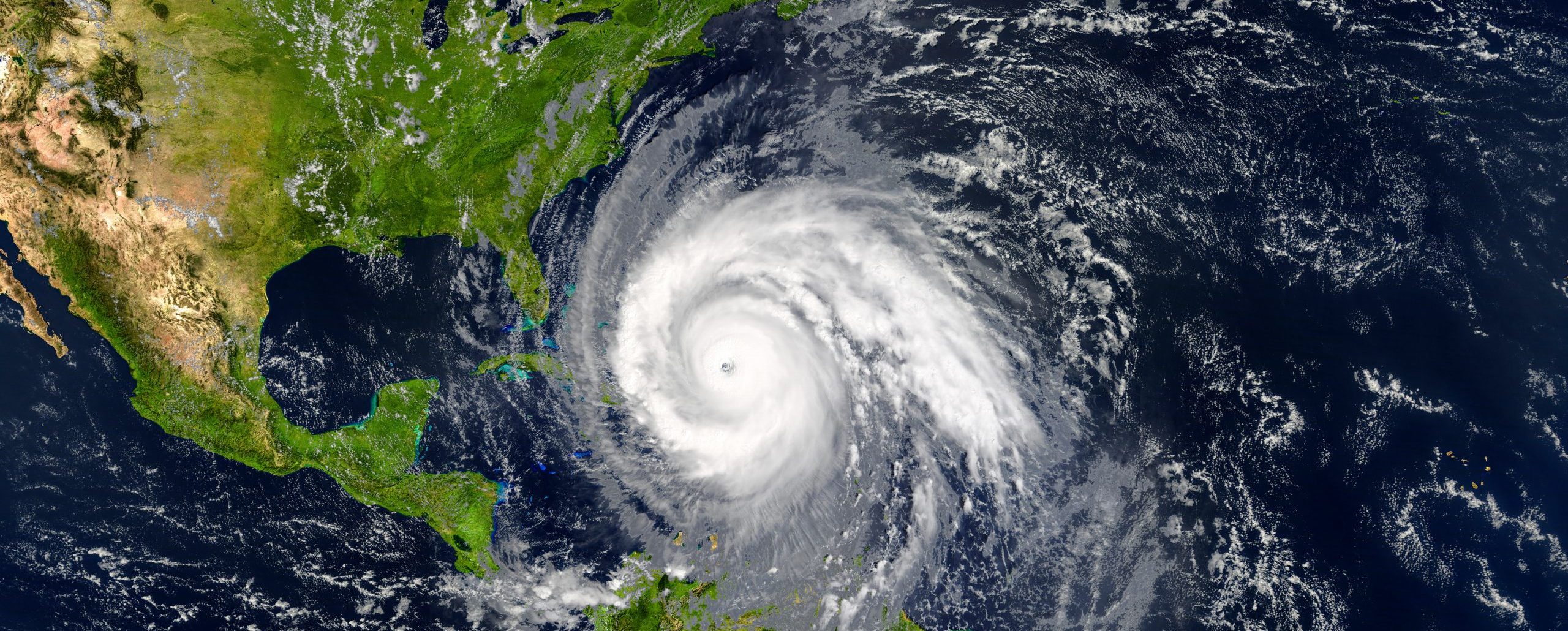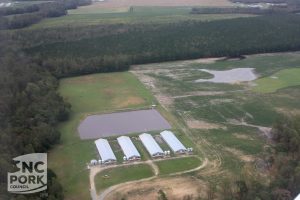
As the Associated Press noted in a 2019 article, hurricanes often spawn storms of misinformation. Indeed, North Carolina’s pork industry has been a victim of misinformation before, during and after recent hurricanes. Image credit: Mike Mareen, Adobe Stock
Hurricane season is officially here and NC State researchers have predicted an above-average season with 17-21 named storms. Here are five things to keep in mind as we enter hurricane season.
Things have improved dramatically in the past 20 years.
It’s true that more than twenty years ago, the intensity of Hurricane Floyd caught many hog farmers off guard. But the industry didn’t waste time in making changes. No new hog farms have been built for more than two decades, hundreds of lagoons in flood-prone areas have been voluntarily closed, and the industry has been proactive in making hurricane preparations a year-round practice.
Long before hurricane season arrives, farmers carefully manage treatment lagoons to maintain adequate storage in the event of heavy rains. And as storms approach, farmers prepare for potential power outages, flooding and other disruptions by positioning generators and animal feed on farms and at key locations in hog-producing counties. When necessary, animals are moved to higher ground or sent to market early.
NC hog farms have fared well during devastating hurricanes.
During Hurricane Matthew and Hurricane Florence — two of the most substantial hurricanes to hit North Carolina in modern times — pig farms experienced limited impacts. During Florence, rivers swelled to record heights and entire communities were inundated by flood waters. But more than 98% of lagoons successfully withstood the floodwaters and experienced little or no damage.
That’s not to say there were no impacts at all. Most of the affected farms were inundated by floodwaters, while a handful of farmers experienced structural issues with their lagoons. However, monitoring by the NC Division of Water Resources found no long-term effects, concluding that the sheer amount of rainwater has a diluting effect and results in lower than normal concentrations of pollutants.
In the past 20 years, more than 300 hog lagoons in NC have been permanently closed.
Since Hurricane Floyd in 1999, 43 hog farms and 103 lagoons located in the 100-year floodplain have been permanently closed through the NC Swine Floodplain Buyout Program. Additional funding was secured in 2018 to expand the program, with support by the pork industry.
In addition, the NC Foundation for Soil and Water Conservation has closed 231 out-of-service lagoons.
Spills from municipal waste treatment plants represent a greater threat than hog farms.
By design and by law, hog lagoons have a non-discharge permit and farmers must maintain a “freeboard” of roughly 19 inches to protect the structural integrity of the lagoon and to absorb significant rain events. Most farmers maintain a lower freeboard during hurricane season in anticipation of another 500-year storm.
By contrast, municipal sanitary wastewater treatment facilities have discharge permits and during a storm, the system may overflow or be directly bypassed. The NC Department of Environmental Quality reported that more than 200 municipal wastewater treatment plants spilled approximately 121 million gallons of sewage into our state’s waterways during Hurricane Florence.
Following that storm, DEQ Secretary Michael Regan said: “We are really focused on our (municipal) wastewater treatment facilities because there are probably orders of magnitude more human waste that has escaped these wastewater treatment facilities than what has escaped these pig lagoons.”
Beware of photos claiming to show flooded hog farms.
During recent hurricanes, media are often quick to label flooded structures in rural areas as a hog barn. They have inaccurately posted photos of municipal waste plants, poultry houses and other agricultural facilities that were labeled as hog farms.
When hurricanes approach, we urge caution when reporting information about our farms and our industry. During and after storms, our staff will reach out and share accurate and timely information about the impacts on North Carolina’s pork industry.
ADDITIONAL RESOURCES

